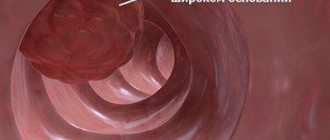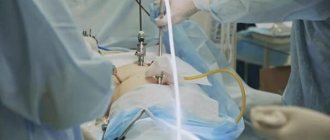Many people are unable to imagine life without stress. They often ask themselves the question of how long they can’t exercise after having their appendix removed. What to do if such a nuisance happens. After all, inflammation can happen at any unforeseen moment, and no one is protected from this.
A sign of the disease is pain in the lower abdomen, on the right. Sometimes, patients' symptoms are supplemented by nausea, constipation and vomiting. With inflammation, the patient has no appetite.
Sports after appendicitis - what is possible and what is not?
It all depends on the form and stage of the disease. During simple catarrhal appendicitis, patients can rise or change position after 4-6 hours. This greatly improves the condition of the intestines, preventing the formation of adhesions.
In cases where appendicitis is gangrenous or complicated by peritonitis, patients remain in bed for 2 days. After this time has passed, you can move with the help of staff.
During the postoperative period, it is recommended not to do any physical activity. After surgery for appendicitis, it is not recommended to lift heavy objects or stand for a long time for a month. There is no need to perform fast movements, especially with jerks. Failure to comply with such simple conditions will result in the seams coming apart.
How long after can you get up?
You can get up after removal of appendicitis after 8 hours if the patient underwent an appendectomy like laparotomy. The incision is made along the muscle, so the sutures are tight. There is a lot of stress in this place, as the muscle is constantly under tension.
External suture after surgery
Before 8 hours after the laparotomy operation, you are not allowed to get up. The seam may come apart. Inflammation and suppuration will develop. Surgical assistance will be required.
After laparotomy surgery, it is permissible to get up after 5 hours. With this type of operation, damage is minimal. After appendicitis complicated by peritonitis, you are allowed to get up only for 2-3 days.
Playing sports when there are no complications
It is necessary to comply with the requirements of restrictions on physical activity for proper scarring of the operated area, preventing the sutures from coming apart. Also, load restrictions must be observed to prevent the formation of hernias.
Dancing, yoga, swimming or jumping is prohibited. This also applies to running. As for the abdominal muscles, no load should be applied to them.
Compliance with the rules during physical activity
- Go to the gym only after your doctor allows it.
- Lifting heavy objects at home is prohibited, especially if the wound is healing poorly.
- It is recommended to perform simpler exercises at first. It is recommended to avoid strong bends forward or backward.
- It is not recommended to pump up the press using additional weight.
- A gradual increase in load can be done only after more than 8 weeks have passed.
- Exercises of high complexity should be performed with minimal weights.
- If discomfort appears during training, then you should interrupt the training without any delay and contact a specialist.
Methods of surgical treatment
In surgery, two main methods are used to remove the appendix: open appendectomy and laparoscopy.
In the first case, the surgeon makes a 10-centimeter incision in the abdominal cavity. This is significant damage to the integrity of the abdominal wall, so its healing takes a long time. During laparoscopy, the integrity of the abdominal wall is slightly violated - three punctures are made, each 2 centimeters in size. After this method, healing of the wound surface and internal tissues proceeds more easily. In both cases, patients are advised to rest completely for 24 hours and take painkillers for the next two days after the surgical procedure.
The body must be protected
Rehabilitation after surgery is the key to proper recovery. Their attending physicians should tell patients when they can exercise.
The fact that no complications appeared is evidenced by the condition of the sutures during their removal. If no illnesses or changes are observed, then you can gradually begin physical activity.
When training, many patients themselves must monitor the condition of their stitches. It is important that no substances, including water, get there. This may cause complications. It is not recommended to ignore the advice of experts.
Additional restrictions
The operation to remove the appendix belongs to the category of simple and non-traumatic procedures.
Complications
In rare cases, the following complications may occur:
- Problems with urination;
- Cardiac dysfunction caused by blood loss;
- Infection due to violation of hygiene rules;
- Inflammatory process of internal organs;
- Negative effects of anesthesia;
- Adhesions and obstruction of the intestinal tract.
Complication factors
They are due to two factors:
- The disease was diagnosed at an advanced stage;
- Failure to comply with the recommendations of the attending physician.
Problem solving
In each case, drug treatment is prescribed in combination with physiotherapy and therapeutic exercises.
In severe situations, repeated surgery is performed. If complications occur after an appendectomy, sports are allowed after six months, and heavy lifting is allowed twelve months after the operation. In such conditions, constant wearing of a bandage is recommended to prevent tension in the suture area.
Sick leave
During the recovery period, doctors prescribe rest and home regimen. During this time, people are entitled to sick leave. The duration of treatment is determined by the person’s condition and the nature of the work. When the condition normalizes, patients are discharged, but with restrictions on physical activity. Schoolchildren are exempt from physical education.
When visiting a doctor, consult carefully. Persistently ask about your health status, answer your doctor's questions honestly, follow all recommended restrictions, and do not create additional health risks for the sake of wanting to immediately return to sports training.
Workouts after 40 years for men. A collection of bodybuilding exercises for men over 40
We will start with the physical state of the body, with theory. Over time, the body changes. Please note. In order to be careful in the gym, patient in getting the result, at the exit. You need to learn it. Know!!!
- The bone structure of an adult man begins to lose strength. The ligaments are not as strong as in youth. Conclusion There is no need to chase heavy weights at the beginning of the journey of building a muscular figure.
- Over the years, the network of capillaries becomes clogged with toxins and cholesterol plaques. The function of delivering nutrients through the blood slows down. Both to the main organs and to the muscles. You need to change your diet, give up unhealthy habitual foods. Then the training program after 40 years will only benefit.
- With age, stamina diminishes. This is a very important point when developing the complex. When pulling iron, you need to consider whether enough oxygen is entering the body or not.
- Age takes its toll. I'm talking about hormonal changes. To pump muscles regularly, you need to keep the bar on the anabolic and catabolic processes. For more information on this topic, take a stroll here.
Exercises after forty years are divided into stages. The preparatory one is designed to get the muscles used to the loads, and the final one is the main one.
Diet
To successfully overcome the consequences of the procedure, the patient is prescribed a diet. After 24 hours, food intake is allowed. It is recommended to eat liquid or pureed food in small portions six times a day. Food is taken chilled to prevent irritation of internal organs. Products that cause increased gas formation in the intestines are excluded from the diet: legumes, salty or smoked foods, soda, mushrooms. Alcohol, smoking and salt are prohibited. Rehabilitation includes giving up baked goods. The diet is followed for two months, after which patients gradually return to their usual foods.
Physical rehabilitation after reconstruction of the anterior cruciate ligament of the knee joint
The anterior cruciate ligament is one of the important ligaments that provides stability to the knee joint. It connects the posterior part of the intercondylar surface of the lateral condyle of the femur with the anterior part of the articular surface of the upper end of the tibia.
The ligament limits excessive anterior displacement of the tibia relative to the thigh. In addition, the nerve endings located in it, in response to load and changes in the position of the joint, give signals to the muscles that stabilize the knee.
Thus, a strong anterior cruciate ligament prevents subluxations and instability in the knee when walking, running, jumping, dancing, i.e. in situations where a sudden change in direction of movement occurs.
Anterior cruciate ligament tears can occur when the knee suddenly twists, hyperextends, or bends while running, landing from a jump, or from a blow to the knee or shin. The most common circumstances of injury are sports games
It should be understood that engraftment of the graft in the knee joint occurs within 12 weeks from the date of surgery. During this period, the new ligament is the weakest and most vulnerable, so care should be taken to exclude the possibility of excessive stress on the ligament. You cannot run, dance, jump, land from a height on the operated leg, squat deeply, perform twisting movements in the knee, stumble and twist your leg, or kneel.
In this regard, the recovery period for this injury is long and is divided into several stages:
POSTOPERATIVE PERIOD
The first week after surgery - in the hospital
The goal is to prevent postoperative thromboembolic complications, reduce postoperative pain and swelling, and restore muscle tone.
Physical exercise:
- active extension-flexion movements of the feet (toes towards you - toes away from you) 30 times every 2 hours during the day;
- voluntary tension of the anterior and posterior thigh muscles for 5 seconds 10-15 times every 2 hours during the day;
Walking
- using crutches and indicating support on the operated leg (place the foot on the floor). Duration: 5-15 minutes 4-5 times a day. During the first 2-3 days after surgery, walk only when necessary (to and from the toilet).
- Supporting load: lean on a straightened leg with a load equal to the weight of the limb (support on the heel, not on the toe). The load should not cause pain in the knee joint.
Forbidden:
- walk with support on a bent leg;
- active extension of the lower leg at the knee joint in the range from 0° to 40°.
Second week after surgery
The goal is to prevent postoperative thromboembolic complications, reduce postoperative pain and swelling, restore mobility in the knee joint (extension - flexion within the range of pain no more than 60°), improve the weight-bearing ability of the operated leg.
Physical exercise:
- Active extension-flexion movements of the feet (toes towards you - socks away from you) 30 times 3-4 times a day.
- Voluntary tension of the anterior and posterior thigh muscles for 5 seconds 10-15 times 3-4 times a day.
- Active flexion and passive extension of the knee joint until pain is felt 10-15 times 1-2 times a day. For patients who have had ligament plastic surgery using the hamstrings, perform the exercise without strong tension in the posterior thigh muscles, helping yourself with your hands to grab the lower third of the thigh.
- Raising a straight leg with weight in a lying or standing position 10-15 times 2-3 times a day.
- Restoring mobility (mobilization) of the patella: move the kneecap with your hand up and down, outward and inward - 10-15 times 3 times a day.
- Full passive extension of the knee joint Position - sitting on a chair, the operated leg lies on a second chair. Place a weight weighing 0.5 kg on the lower third of the thigh. Relax your muscles, trying to fully straighten your leg at the knee. Hold the load for 10 minutes. Repeat styling 2 times a day.
Walking:
With the help of crutches. Duration: 10-15 minutes 4-5 times a day.
Support load: lean on a straight leg with a load of 25-50% of body weight.
Forbidden:
- walk with support on a bent leg;
- active (muscle strength) extension of the knee ranging from 0° to 40°.
REHABILITATION PERIOD (3-5 weeks after surgery)
The goal is to improve the mobility of the knee joint ranging from full extension to flexion at an angle of about 90″, restore the supportability of the leg, and increase the tone and elasticity of the thigh muscles.
Physical exercise:
- Voluntary tension of the anterior and posterior thigh muscles for 5 seconds 10-15 times 3-4 times a day.
- Active flexion and passive extension of the knee joint 10-15 times 2-3 times a day.
- Raising and holding a straight leg suspended in a lying position 10 times 3 times a day.
- Active bending of the leg at the knee from a lying position on the stomach 10-15 times 2-3 times a day. For patients who have had ligament plastic surgery using the hamstrings, perform the exercise from the 5th-6th week.
- Restoring mobility (mobilization) of the patella: move the kneecap with your hand up and down, outwards and inwards - 10-15 times 3 times a day.
- Full passive extension of the knee joint with placement of a weight weighing 1 kg on the anterior part of the knee joint for 10 minutes, 2 times a day. The exercise is performed at the end of the training cycle.
Walking:
From the 4th week, walking without additional support.
Forbidden:
- Walk with support on a bent leg;
- Active (muscle strength) extension of the knee ranging from 0 to 40°.
6-7 weeks after surgery
The goal is to restore mobility in the knee joint, restore tone, elasticity and increase the strength of the thigh muscles, restore leg support and walking skills, and restore everyday ability to work.
Physical exercise:
- Restoring mobility (mobilization) of the patella: move the kneecap with your hand up and down, outwards and inwards - 10-15 times 3 times a day.
- Bend the leg at the knee joint using manual traction using a loop of a towel or rubber bandage 10-15 times 2-3 times a day.
- Leg abduction in a lateral position with external resistance 10-15 times 2-3 times a day.
- Active bending of the leg at the knee joint while lying on the stomach with external resistance 10-15 times 2-3 times a day.
- Bringing the leg in a position lying on its side with external resistance 10-15 times 2-3 times a day.
- Raising a straight leg forward in a standing position with external resistance 10-15 times 2-3 times a day.
Walking
No additional support. Duration: 20-40 minutes 4-5 times a day.
Forbidden:
Walk with support on a bent leg;
Functional period (8-12 weeks after surgery)
The goal is to restore physiological mobility of the knee joint, restore tone, elasticity and increase strength of the thigh muscles, improve muscle balance and coordination of movements, restore daily activity, return to office and light physical work.
Physical exercise:
- Perform all of the above exercises.
- Exercises to restore coordination of the muscles of the operated leg and maintain body balance on an unstable support. Balance training should begin with simple exercises with a rehabilitator's belay or self-belay at the wall: turns, bends, swaying the body on two bent legs with eyes open and closed. Use a hard floor as a support at first, and only as you gain confidence in your leg, switch to unstable supports (mattress, sofa cushion, gymnastics mat, special inflatable pillows or swinging platforms).
- Half squats on one leg from 10° to 60′ 10-15 times 1-2 approaches.
- Exercise on an exercise bike for 10-30 minutes a day.
Control of loads and intensity of exercise: swelling and pain in the joint should not be constant. If knee swelling does not go away after rest and in the morning, then you need to stop exercising for 2-3 days. If swelling persists after rest, you should see a traumatologist.
Walking without restrictions.
TRAINING PERIOD (13-30 weeks after surgery)
The goal is to restore normal mobility and stability in the knee joint, muscle strength and endurance, muscle control and coordination of complex movements, and restore the ability to perform physical labor and play sports (for athletes).
3. Walk without restrictions.
4. Exercise:
- Performing a set of exercises similar to the period of 8-12 weeks.
- Training to maintain body balance on an unstable support
- Exercise on an exercise bike for 30 minutes 1-2 times a day,
- Fast walking on a treadmill.
- Exercises on weight machines aimed at strengthening the strength of the posterior and anterior thigh muscles and other muscle groups - 2 times a week. Please note that until 6 months after surgery you should not train the anterior thigh muscles on a machine with a block; premature force load on the kneecap can lead to damage to the patellar cartilage.
- Jogging outside - from 16-18 weeks.
- Squats from 0′ to 90* - from 18-20 weeks.
- Squats from 0° to 90° with weight, side steps, jumping, exercises with a skipping rope, snake running and acceleration - from the 20-24th week.
Forbidden:
For up to 6 months from the date of surgery, perform strength exercises for the anterior thigh muscles on a machine with a block (i.e. extension)
The beginning of general and special sports training for the coordination of complex movements, strength, speed and endurance of muscles under the guidance and control of the coach and team physiotherapist - from the 24-25th week after surgery.
Physiotherapy
A mandatory element of rehabilitation is a course of physical therapy (PT), aimed at preventing postoperative deterioration of the patient’s condition: pneumonia, thrombophlebitis, increased gas formation and constipation. With this course, swelling is reduced, regenerative processes are stimulated and pain is reduced.
Patients immediately after surgery begin to perform physical therapy exercises. The course of treatment begins with breathing exercises, later the emphasis shifts to working the muscles of the arms and legs.











